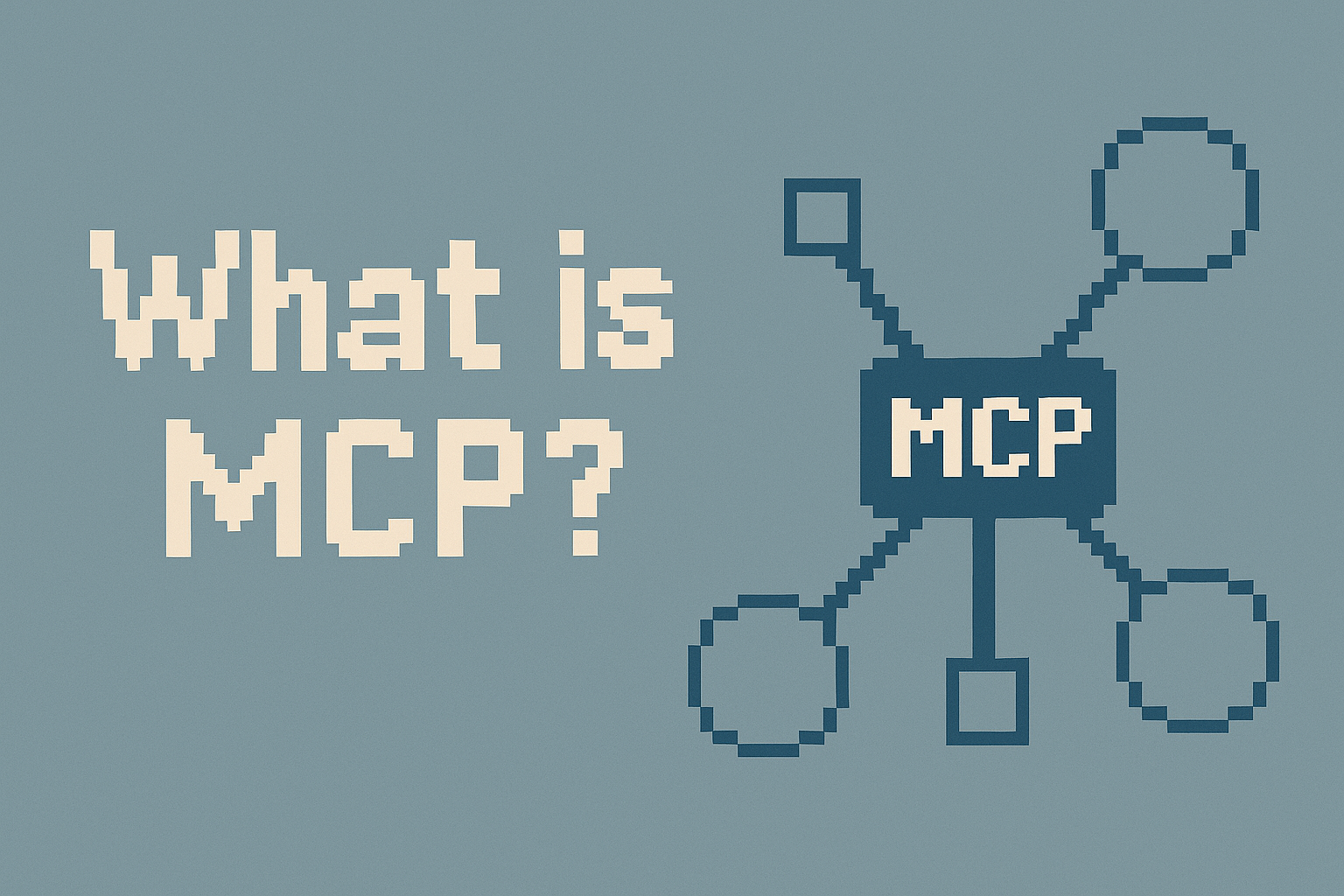What is MCP and Why Does it Matter?

If you’ve worked with LLMs for more than five minutes, you know this pain:
The model can reason, write, even summarize like a genius – but the moment you need specific knowledge pulled from your favorite software (e.g. Gmail, Slack, M365 etc.)?
You’re stuck duct-taping together custom code or fumbling with API documentation to get exactly what you need.
OR, you use MCP.
Short for Model Context Protocol, MCP is an open standard launched by Anthropic that promises to do for AI integrations what USB-C did for hardware: make everything just work.
MCP isn’t a product, an API, or a vendor lock-in scheme. It’s a protocol – and it might just become the default way LLMs connect to the world. Currently MCP servers are published to work directly with Claude or Claude Desktop, but any LLM can use MCP just fine.
MCP Server: Central command center that processes requests to API(s), manages resources, and controls access to the system(s)—like a busy airport control tower directing traffic and managing all flight operations. It acts as middleware to orchestrate Agent workflows for a single system or multiple systems.
MCP Client: End-user application that connects to the MCP server, sends requests to the server, and displays results—like an individual airplane that communicates with the control tower to receive instructions and permission to take off or land.
One of the ah-ha moments I had was realizing the MCP Server itself IS the API call itself. Hopefully this helps you with your light bulb moment as well!
Here’s a quick overview:
- MCP (Model Context Protocol) is a standard for connecting LLMs to external tools, APIs, and data sources.
- It abstracts integration so developers don’t need custom guidelines or ingesting API documentation every time a model needs to pull context from systems.
- It supports multiple LLMs (not just Claude) and is designed to be interoperable.
- MCP is already supported by OpenAI, Google, Anthropic, LangChain, Langflow and others.
- It accelerates agentic AI by giving models clean, structured ways to access real-time information and take meaningful actions.
What Problem Does MCP Solve?
Right now, if you want to give a model access to an internal CRM, a search engine, a Python runtime, or any tool with real-time knowledge, you have to:
- Write tons of custom prompt wrappers
- Use brittle RAG pipelines
- Or spin up a full agent framework with custom code
MCP replaces that spaghetti with a standardized interface. You define a tool or data source once. That definition can then be used by any LLM that supports MCP.
It makes integrations modular, portable, and shareable.
You can find lists of legit MCP Servers like this one: https://github.com/modelcontextprotocol/servers
Or do a quick web-search for the software system you want to use with an Agent and find the Github repo.
DOWNLOADER BEWARE! MCP is in its early days and malicious players can use this opportunity for attack. ONLY download and use verified MCP servers with community backing.
How MCP Works (At a High Level)
Think of MCP as a contract between the model and external tools:
- Each tool exposes an OpenAPI-style schema describing what it does.
- The model receives a list of those tools and their capabilities.
- When prompted, the model chooses what tools to call (and how).
- The system routes the call, gets the response, and feeds it back into the model’s context.
It doesn’t matter whether you’re using Claude, GPT-4, or Gemini. If they speak MCP, they speak the same language to the tools.
Why This Matters for Developers, Teams, and the Future of AI
The more AI tools you build, the more you realize the real complexity isn’t the model itself – it’s the data, context, and tools surrounding it.
MCP shifts us from one-off, tightly coupled agents to modular, composable ecosystems.
This makes your stack:
- Easier to maintain
- Faster to prototype
- More future-proof and LLM-agnostic
Imagine:
- Creating a connector once for your internal knowledge base – and every team, app, or LLM in your org can now use it.
- Swapping out models without redoing your entire integration.
- Building agent workflows that are standardized, observable, and secure by default.
This is the future we’re headed toward.
What You Can Do Today
- Check out the official docs at modelcontextprotocol.io.
- Explore the GitHub repo and SDKs to see how to define tools and build MCP-compatible apps.
- Audit your current AI stack and identify areas where you’re manually integrating tools that could be abstracted with MCP.
- Join the community and contribute feedback. It’s still early, but adoption is growing fast.
Final Thoughts
If you build AI tools, apps, agents, or platforms – you’re going to hear about MCP.
A lot.
It’s not hype. It’s a defining moment. And it’s going to change how AI systems are built and deployed.
If you’re already experimenting with model orchestration, agent frameworks, or complex RAG pipelines, it’s worth seeing how MCP might simplify and unify your approach.
Want to talk about how MCP fits into your AI stack?
Shoot me a message. I’m helping teams adopt modular, maintainable AI architectures that actually scale.
Let’s build something smarter.




